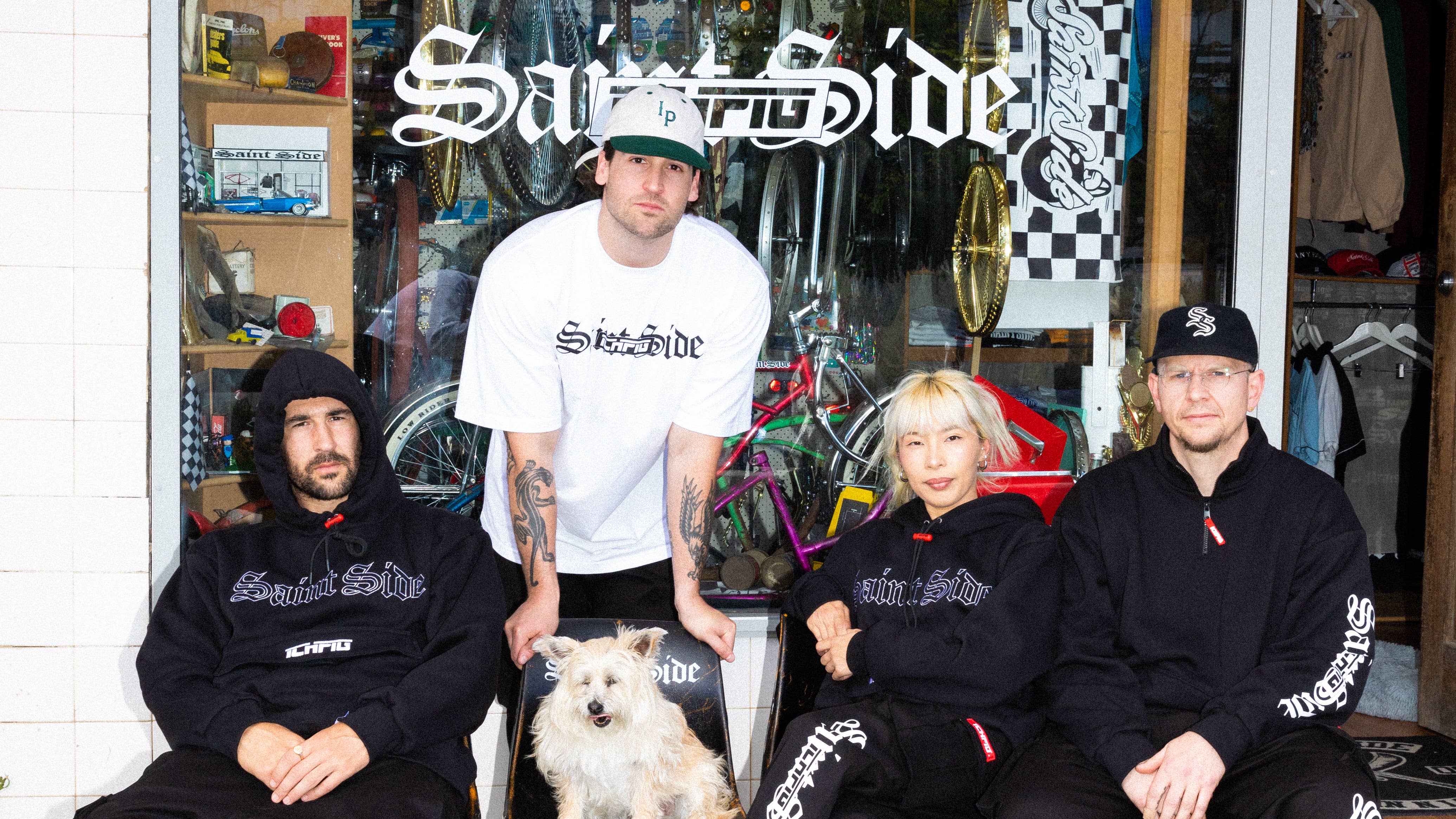
Ichpig and Saint Side have been two of the biggest streetwear brands in Melbourne for the better part of 10 years. Saint Side has driven community initiatives and cultural moments in the Australian streetwear scene since its earliest days, running everything from car meets, to bike shows, to sneaker swap meets. Ichpig has cemented itself in the scene as the hallmark of quality streetwear, known for their detailed designs and custom fabrication. Their OG ‘tall hoodie’ became an instant streetwear classic in the 2010s, and its quality became the unbeatable standard.
The two brands have had a relationship over the years, but they were brought closer together during the height of the pandemic when their physical stores had to close temporarily. This is how a highly anticipated collaboration between the two brands was born. On Saturday the 26th of November they held an event to launch a Saint Side x Ichpig clothing drop that includes hoodies, track pants, t-shirts and socks, at Saint Side’s store in west Melbourne. The event saw an overwhelming turnout, and performances from Southside Denny, Savage The Girl and Cherry Chola.
We sat down with the founder of Saint Side, Mark, and Ichpig founders Nathan and Alex to talk about the evolution of streetwear, their mutually respectful and authentic relationship, and the long-overdue collaboration between the two community pillars.
It’s amazing to see both brands still thriving despite all the disruption the pandemic has caused over the last few years. Tell me a little about what that season was like for you guys?
Mark: Covid changed the landscape for us. For context, we took a hit during this time with our city store closing its doors—but the community out in west Melbourne was doing really well. We were also just checking in with the Ichpig guys during this time to see how they were doing as a similar business. We ended up talking more and more through that period, and we would take turns checking in each other. That was how the seeds of our relationship were planted.
Alex: During Covid our online store was so busy, and we could only really focus on the internal stuff and interact with our team—we were really missing community interaction and engagement. So coming out of Covid, while we’d had a lot of ‘digital’ interaction with our customers, there was a gap in terms of physical interaction because of all the time spent in isolation.

It feels like both brands have upped their physical presence by running more events recently. Saint Side’s been doing more car meets and Ichpig just did Sneakerland. Have these sorts of events become more important to you?
Nathan: For us, having events where we can link up with other heads in the scene—connect the dots and build relationships to collectively put Melbourne on the map—has been really important. Streetwear is a cross section of so many different cultures from sneakers, to music, to bike and automotive culture. The collaboration of Ichpig and Saint Side is in part about bringing together these cultures.
Mark: Yeah, it’s been about applying [the principle of] just going out there and getting back into it. It felt almost like we were Amazon for two years during the lockdowns—we were just looking at four walls and packing boxes and getting online orders out. So getting out and doing an activation was important, especially because we originally created the shop to be a hang-out. We needed physical interaction; we needed people coming [to the shop] to have lunch and do things out the front or just stop by and catch up. Being able to do this again has been hugely important.
[As a brand] you can develop your own online culture, but this doesn’t automatically mean that it will translate into a physical community. I think that’s what both brands do very well, because we’re both brands that are about getting out there and doing stuff out there in the real world.
Nathan: Yeah, there’s more to a brand than just the product—there’s the people in the brand. The community really makes up the brand.
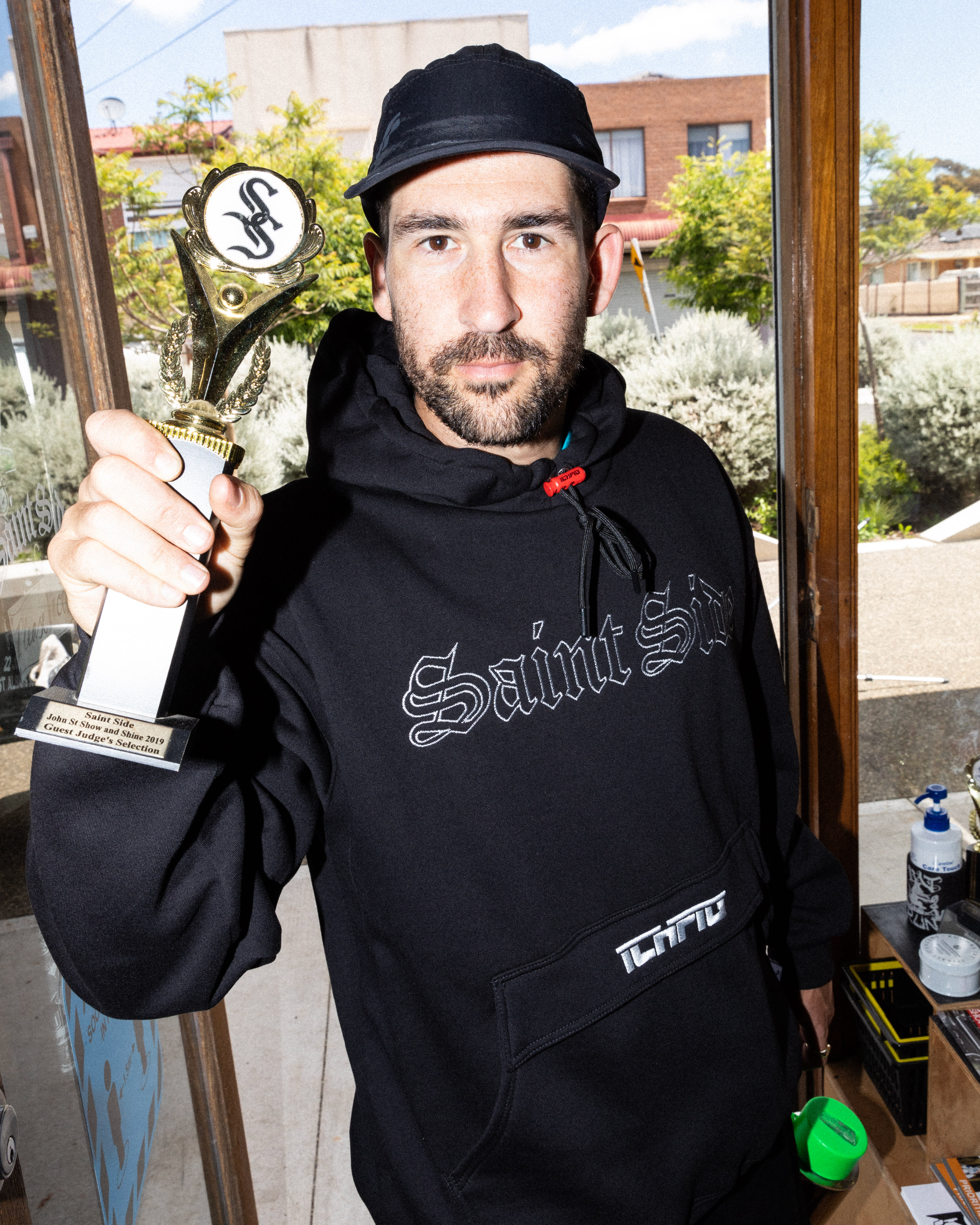
The term “streetwear” is becoming looser and looser, and it feels like many brands just use word carelessly to describe a collection or drop. I’m interested in all of your takes on this, and also how you all define streetwear?
Nathan: It’s a hard one because obviously, you become hard-pressed to describe it without sounding negative, but the term is being stretched and pulled and it’s become a bit Frankensteinian, ruining itself because of how broadly the term has been applied—it’s being eaten from two ends. There’s the gym wear brands coming at it from underneath, and then there’s the high end brands eating it from the top.
Alex: I think it’s earliest stages, [streetwear] was definitely about casual wear and comfort first, and centred around the action of ‘doing’. I think Mark would agree that for Saint Side and Ichpig, the action of doing has always been really important to both of our brands. Mark doesn’t just have bicycles in his front window because he thinks they’re shiny and a ‘cool’ aesthetic. He can pick up tools and fix them and work on them. It’s the same for myself and Nate, we don’t see a sewing machine and think, “Oh God, how do we use that?” we can sit down and crank out a garment if we need.So I think the act of doing is quite significant in streetwear, because they’re clothes that you wear doing things and that you wear everyday.
Mark: We’re all putting on one outfit in the morning, and then we’re wearing that ‘til we hit the sack. There’s no getting changed for different events throughout the day and putting on hats and costumes. We’re just getting dressed and getting shit done every day. I think our clothing is a testament to that—that’s the lifestyle we lead—it’s organic. No one here is acting. We’ve been doing this our entire lives.
Streetwear shouldn’t be about wearing something because the next man is wearing it, or buying something because someone else bought it, but I think a bit of that has crept into the industry. It should be about buying something because of the story attached to the product itself.
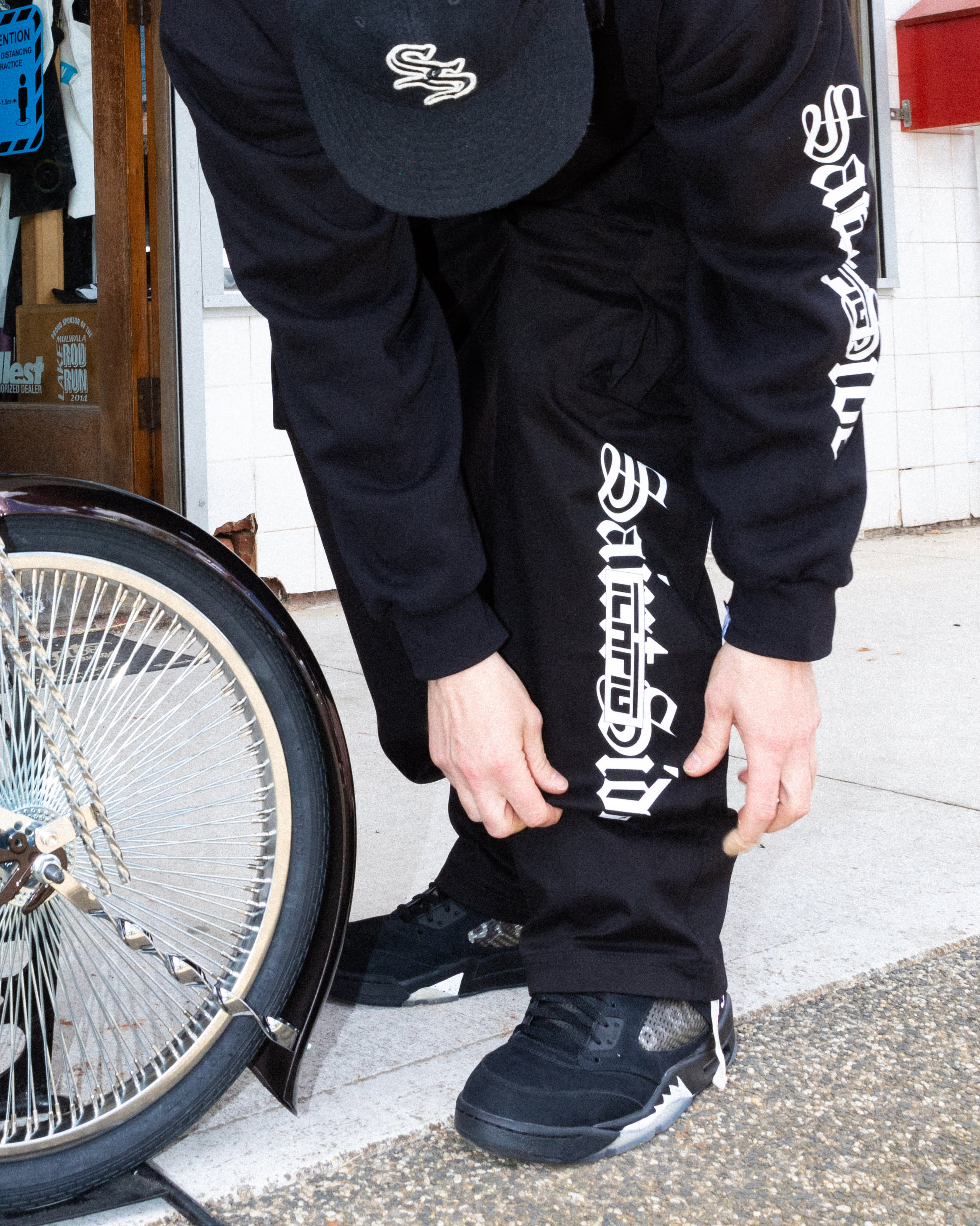
This brings to mind the idea of posturing when it comes to culture—people wanting to look like they belong to a specific culture, as opposed to actually belonging to it. Is this something that you’re actively trying to keep out of your respective communities? Can you sense those people when they walk through the door?
Mark: Sometimes you can tell who they are—I’ve got a pretty good bullshit reader. We’re authentic through and through here. We’ve never done anything that we’re not about, or sold anything or told a story that we’re not 100% qualified for or passionate about. Sometimes you can catch it out, and other times you’re able to tell that a person is mature enough to understand the value of what you’re presenting beyond its aesthetic quality.
If you look at sneaker culture for example, people will spend their entire savings on sneakers—money they’ve been saving for a house—because they get bit by the bug and will drop 30 racks in a year on sneakers. Then years later they’re like ‘fuck sneakers’. Now that’s not sneaker culture, that’s a person more concerned with consuming than participating in a community, or actually loving the thing. Riding the hype itself is a drug.
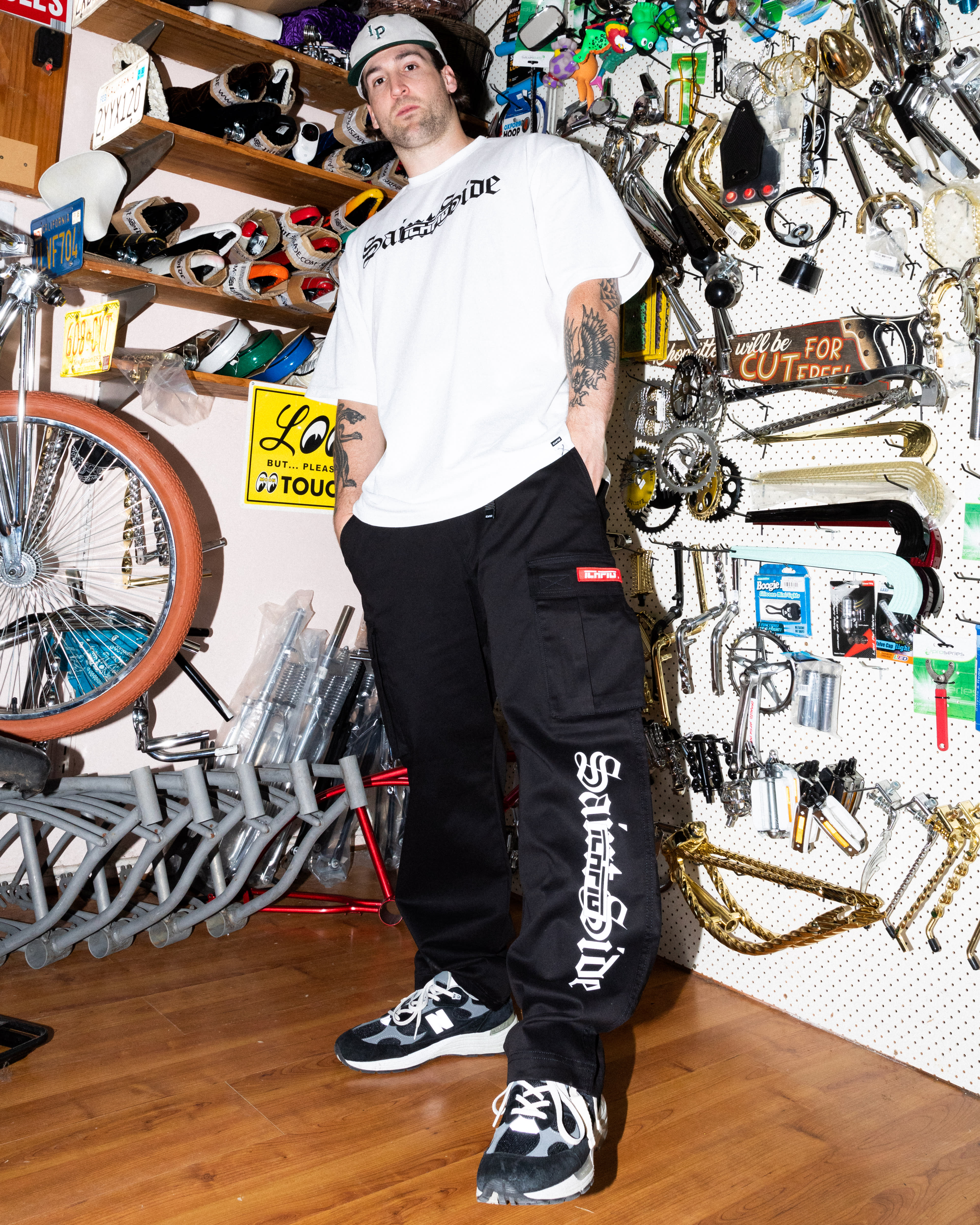
With years of being in the game under your belt, at this point, what does growth look like?
Alex: That’s a good question, a challenging question. I mean, growth for us personally looks like providing more opportunities to people in and around the community, trying to find other smaller independents that were like us 10 years ago and helping to springboard them either through our platform or a collaboration, as well as offering up our space here in Brunswick to local musicians, artists and smaller designers.
Nathan: Yeah, growing in sales and volume isn’t just about more money, it’s so that we can invest back into our community and people in our organisation. Like with ON3 studios, Aman and Kisha do a lot within the music industry, and they’re in the start-up phase of their business, and it’s nice to be able to say, “Hey, guys, here’s some cash put on a show,” and not have to sweat it.
So it sounds like growth for Ichpig at this point is more ‘horizontal’—bringing other people up to the point you’re at. What does growth look like for Saint Side Mark?
Mark: Adding on to what the boys were saying, Adrian Eagle did his first show ever at the Saint Side city store and 18 months later he won and ARIA. It’s a butterfly effect—you don’t know where your impact on someone will lead them to.
Because I’m a little older than the boys, I think what we’re trying to do is streamline things a bit and increase the sense of peace we have as a brand. It would be great to get some programs going and maybe move the physical space to somewhere that’s a little more relaxing. We’re thinking maybe the Bayside area in Melbourne or somewhere near the beach, just so we can jump on a bike and go for a cruise after work, because we find that we’re already doing that 2-3 times a week.
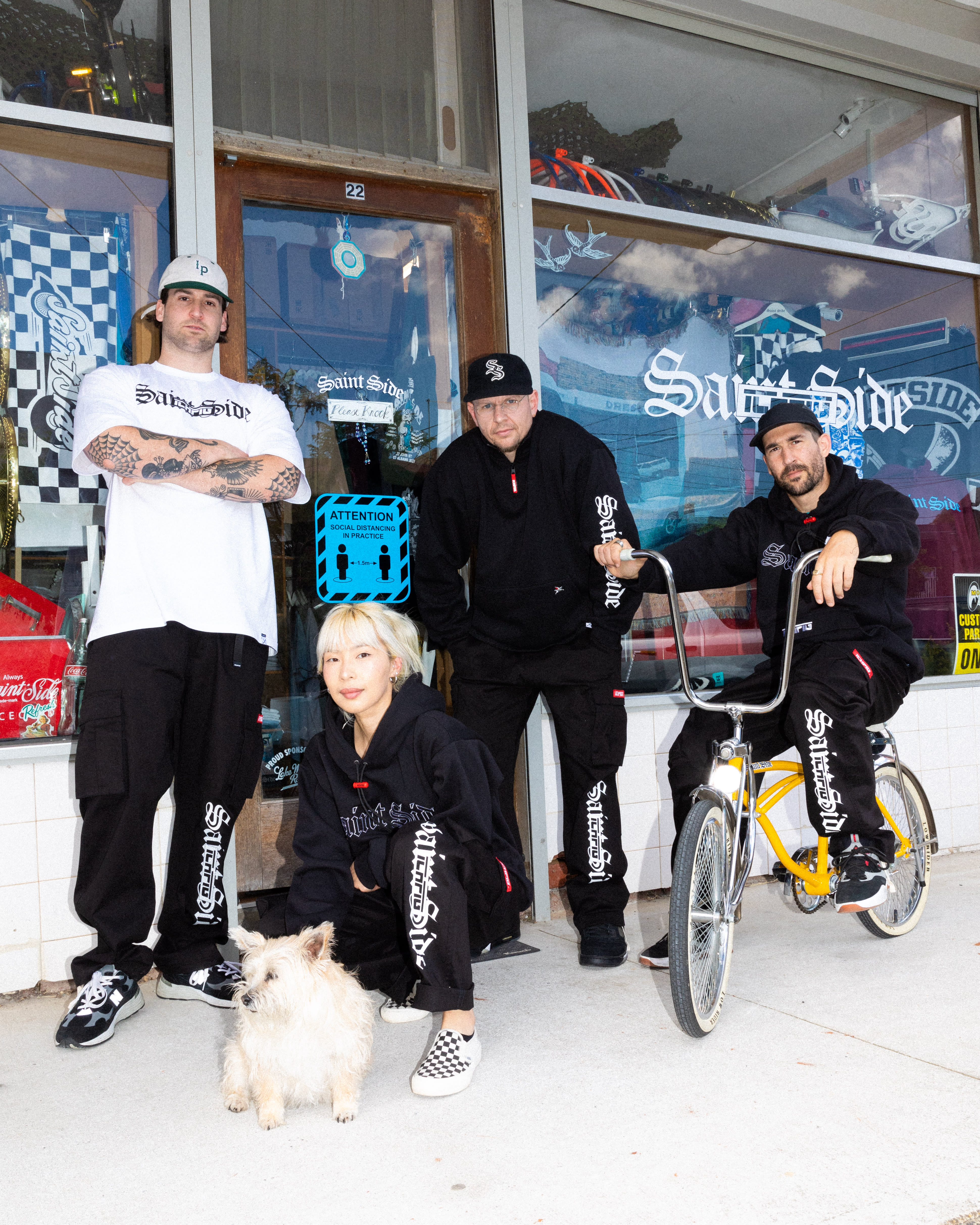
If you could leave a piece of advice for up-and-coming streetwear brands, what would it be?
Alex: Be all in, and be consistent.
Mark: If you’re good and consistent, you’ll be great. But if you’re great and consistent, you’ll be successful. Authenticity is also key.
Nathan: It’s about [finding something] that’s unique and meaningful—that’s what you’ve got to figure out, you’ve got to figure out your unique selling point. Uniqueness and authenticity [is key].

